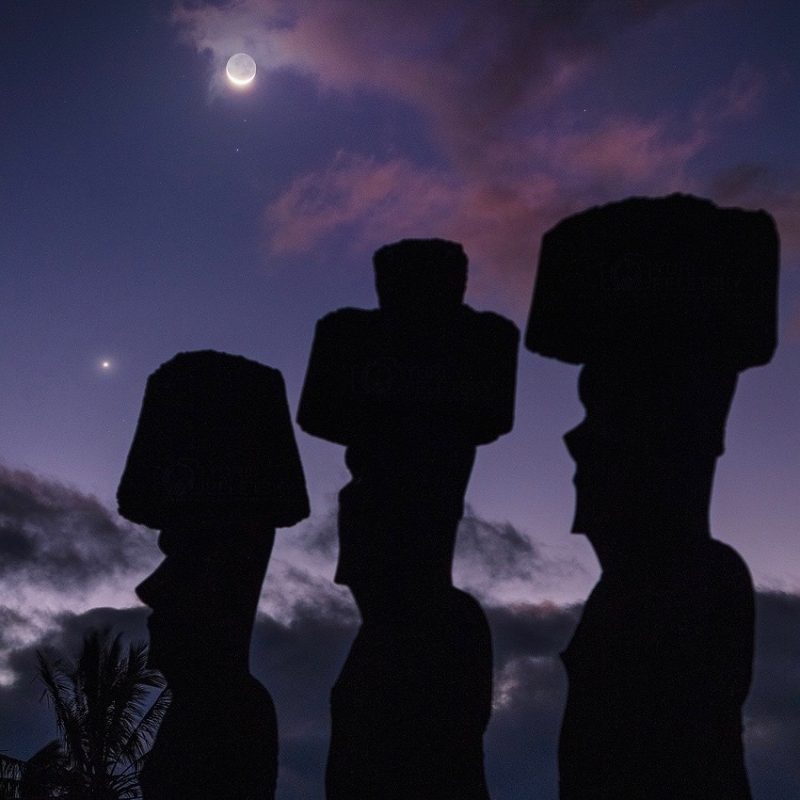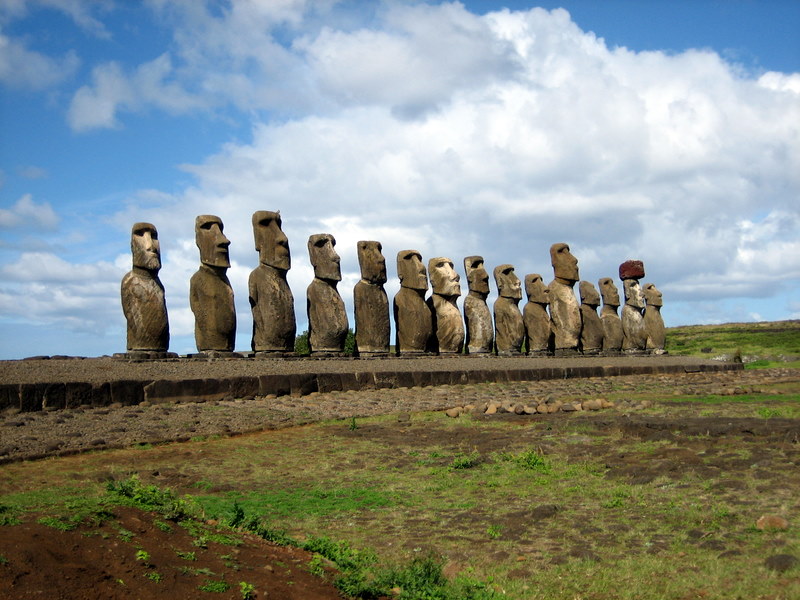A new study says Easter Island’s societal collapse didn’t happen as researchers have long thought.
The remote island of Rapa Nui – also known as Easter Island – 1,900 miles (3,000 km) from South America, is well-known for its elaborate ritual architecture, particularly its numerous statues (moai) and the monumental platforms that supported them (ahu). A widely-held narrative says that construction of these monuments ceased sometime around 1600, following a major societal collapse.
But the new research, published February 6, 2020, in the peer-reviewed Journal of Archaeological Science, found that construction of these statues began soon after Polynesian seafarers settled Easter Island in the 13th century, and increased rapidly, sometime between the early-14th and mid-15th centuries, with a steady rate of construction events that continued beyond European contact in 1722.
Binghamton University anthropologist Carl Lipo is a study co-author. He said in a statement:
What we found is that once people started to build monuments shortly after arrival to the island, they continued this construction well into the period after Europeans arrived.
This would not have been the case had there been some pre-contact “collapse” – indeed, we should have seen all construction stop well before 1722. The lack of such a pattern supports our claims and directly falsifies those who continue to support the ‘collapse’ account.
Once Europeans arrive on the island, there are many documented tragic events due to disease, murder, slave raiding and other conflicts. These events are entirely extrinsic to the islanders and have, undoubtedly, devastating effects. Yet, the Rapa Nui people – following practices that provided them great stability and success over hundreds of years – continued their traditions in the face of tremendous odds. The degree to which their cultural heritage was passed on – and is still present today through language, arts and cultural practices – is quite notable and impressive. I think this degree of resilience has been overlooked due to the ‘collapse’ narrative, and deserves recognition.
With the help of statistics, the research clarified variable radiocarbon dates pulled from soil under the island’s massive stone platforms topped with megalithic statues and large, cylindrical stone hats.
The researchers also re-examined written observations of early European visitors. For example, Dutch travelers in 1722 noted the monuments were in use for rituals and showed no evidence of societal decay. The same was reported in 1770, when Spanish seafarers landed. However, when British explorer James Cook arrived in 1774, he and his crew described an island in crisis, with overturned monuments.
Read more about the research here.

According to the new findings, the descendants of Polynesian settlers continued to build, maintain, and use the monuments for at least 150 years beyond 1600, the date long hailed as the start of societal decline. University of Oregon anthropologist Robert DiNapoli is the lead author of the study. He said in a statement:
The general thinking has been that the society that Europeans saw when they first showed up was one that had collapsed. Our conclusion is that monument-building and investment were still important parts of their lives when these visitors arrived.

Bottom line: According to new research, Easter Island’s societal collapse didn’t happen as researchers have long thought.
Source: A model-based approach to the tempo of “collapse”: The case of Rapa Nui (Easter Island)











